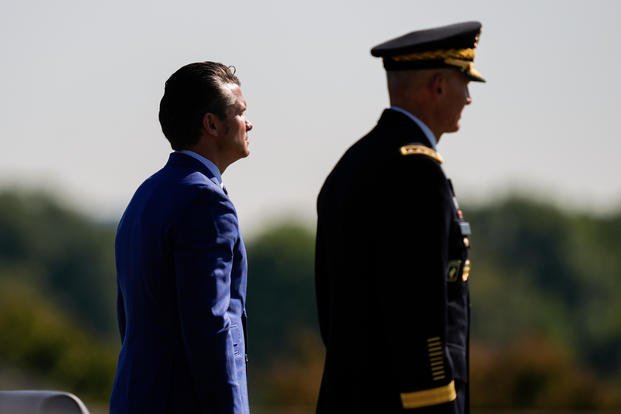Hegseth Abruptly Summons Top Military Commanders to a Meeting in Virginia Next Week

Associated Press | By Konstantin Toropin, Emma Burrows and Ben Finley
Published
WASHINGTON — Defense Secretary Pete Hegseth has summoned the military's top officers — hundreds of generals and admirals — to a base in northern Virginia for a sudden meeting next week, according to three people familiar with the matter.
The directive did not offer a reason for the gathering Tuesday of senior commanders of the one-star rank or higher and their top advisers at the Marine Corps base in Quantico. The people, who described the move as unusual, were not authorized to publicly discuss the sensitive plans and spoke on condition of anonymity.
The Pentagon's top spokesman, Sean Parnell, confirmed that Hegseth "will be addressing his senior military leaders early next week.”
Read Next: Pentagon Adds Exemptions to Requirement for All Troops to Get the Flu Shot[1]
Across the military, there are 800 generals and admirals of all ranks. Many command thousands of service members and are stationed across the world in more than a dozen countries and time zones.
The meeting, first reported by The Washington Post, comes on the heels of several unusual and unexplained actions that Hegseth has taken involving military leaders.
In May, Hegseth ordered[2] that the military cut 20% of its four-star general officers, directed an additional 10% cut from all general and flag officers across the force, and told the National Guard to shed 20% of its top positions.
In February, Hegseth fired[3] Adm. Lisa Franchetti, the Navy's top officer, and Gen. James Slife, the Air Force's second highest officer, without explanation. He also relieved the military's top lawyers[4].
Since then, Hegseth has fired other military leaders[5] without saying why. Most recently it was a general[6] who led a military intelligence agency whose initial assessment[7] of U.S. damage to Iranian nuclear sites in American strikes angered President Donald Trump.
Burrows reported from London.
Military Headlines[8] Pete Hegseth[9] Pentagon[10] Department of Defense - DoD[11] Commands[12]
© Copyright 2025 Associated Press. All rights reserved. This material may not be published, broadcast, rewritten or redistributed.